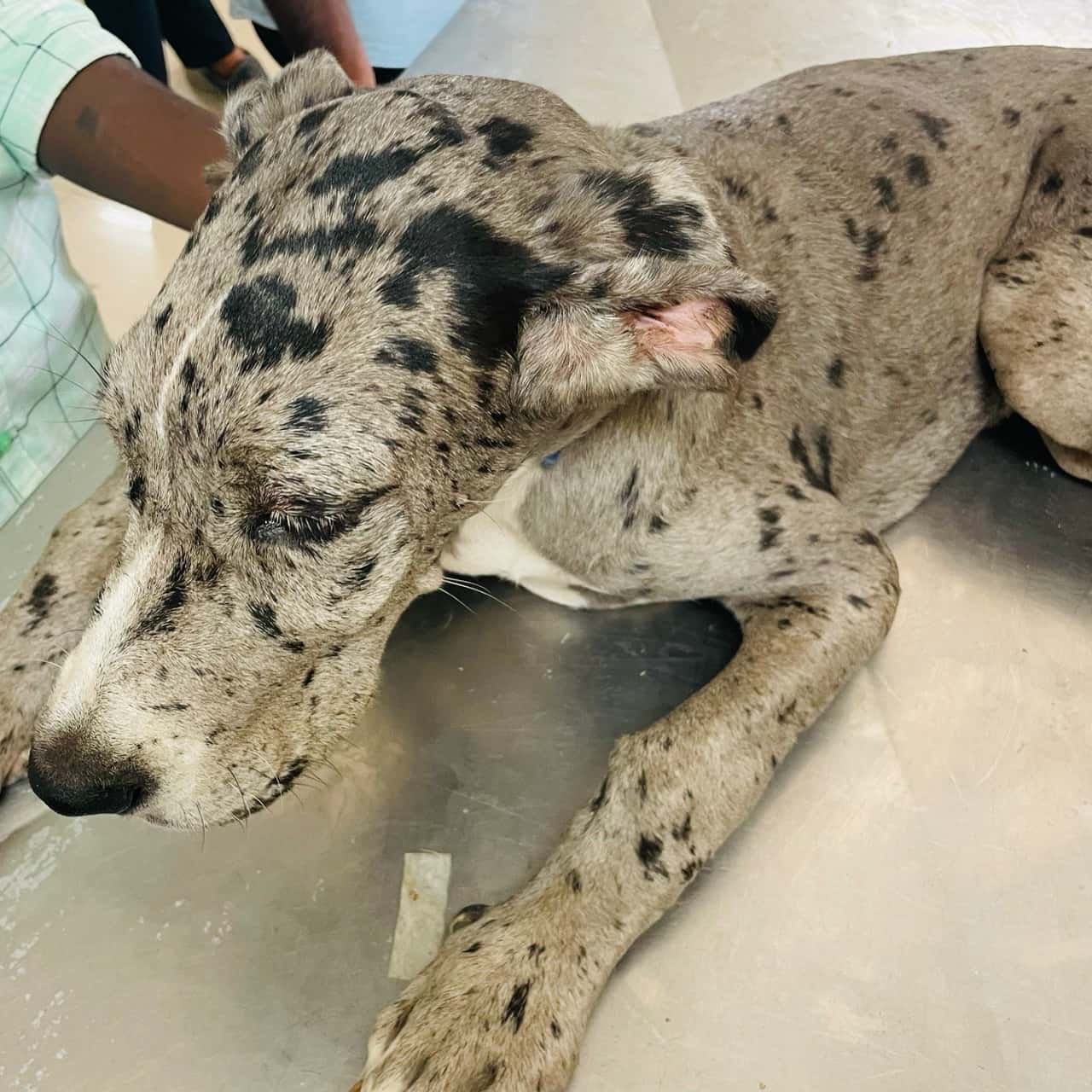TABLE OF CONTENTS
Chronic Kidney Disease (CKD)
Chronic kidney disease (CKD) is a condition in which the kidneys lose the ability to remove waste and balance fluids.
CKD occurs when compensatory mechanisms are no longer able to maintain excretory, regulatory, and endocrine functioning. It results in retention of nitrogenous solutes, failure of hormone production, derangements of fluid, electrolytes, and acid-base balance.
Chronic kidney disease (CKD) is also known as chronic renal failure (CRF).
Differences between ARF/AKD and CRF/CKD
| Parameter | Acute Renal Failure | Chronic Renal Failure |
|---|---|---|
| PCV | Increase | Decrease |
| Size of Kidneys | Large | Small |
| Onset of Disease | Suddenly | Insidiously |
| Reversibility | Reversible | Irreversible |
| BUN & Creatinine | Increase | Increase |
| Phosphorus | Increase | Increase |
| Pottasium | Increase | Decrease |
| Urine Output | Anuria or Oliguria | Polyuria |
Etiology
Chronic kidney disease (CKD) is caused by the following reasons:
- Chronic interstitial nephritis is the most common pathology.
- Chronic pyelonephritis.
- Chronic glomerulonephritis (immune-mediated)
- Due to Amyloidosis
- Metabolic causes like hyperglycemia
- Nephrotoxic drugs like aminoglycosides, analgesics, antifungals, anaesthetics, etc.
- Ethylene glycol, which is used in cars as a coolant,.
- Progressive interstitial fibrosis
- Any cause of acute kidney disease.
Clinical Signs
Clinical signs for CKD are listed below:
- Subcutaneous oedema
- Melena
- Hematuria
- Loss of sight
- Bad breath (halitosis)
- Mouth ulcers (uremic ulcers) in advanced cases
- Arterial hypertension
- Anaemia
- Vomiting
- Anorexia
- Lethargy
- Aversion to exercise
- Weight loss
- Weakness
- Loose-bowel syndrome
- Pale buccal mucous membrane
- Dehydration
- Ascites
Azotemia
Azotemia is the excess urea or other non-protein nitrogenous compound in the blood. These catabolites are derived from protein degradation. Their concentration function increases when dietary protein increases (75% or more nephrons are lost).
Stages of CKD
CKD can be classified into four stages based on the severity of azotemia:
- Stage 1: No azotemia (normal creatinine)
- Stage 2: Mild azotemia (normal or mildly elevated creatinine)
- Stage 3: Moderate azotemia
- Stage 4: Severe azotemia
Diagnosis
CKD can be diagnosed by:
- History and clinical signs
- Serum analysis: increased BUN and creatinine levels
- Hyperphosphatemia
- Hypokalemia
- Hyperkalemia
- Hypermagnesemia
- CBC analysis: decreased PCV value and RBC (anaemia)
- Urine analysis: proteinuria
- USG: hyperechoic kidney
- Renal biopsy: confirmative diagnosis of kidney disease
Clinical Consequences of CKD
The following are the clinical consequences of CKD:
- Acid-base electrolyte disturbances due to decreased GFR
- Impaired renal hormone synthesis leads to calcitrol deficiency, which leads to secondary hyperparathyroidism and osteomyelitis.
- Erythropoietin deficiency is associated with a hypoproliferative anaemia.
- GI consequences like nausea, vomiting, polydipsia, etc.
- Impaired urine concentrating ability leads to polyuria.
- Cardiovascular consequences like hypertension
- Neuromuscular consequences can also be seen in advanced CKD.
Treatment
Treatment of CKD includes the following management and drug procedures:
- Management of GI tract signs
- Correction of metabolic defects
- Management of hypertension
- Correction of dehydration
- Antibiotics for secondary bacterial infection
- Continuous Renal Replacement Therapy (CRRT)
- Management of Anaemia
Management of GI tract signs
Antiemetics like Ondansetron are used to stop vomiting; Pantoprazole or Ranitidine can be used to relieve ulcers and uremic stomatitis. Intestinal protectants like sucralfate can be used to protect the gastric mucosa.
Correction of metabolic defects
Hyperphosphatemia and hypokalemia are the major metabolic defects seen in CKD:
- Management of hyperphosphatemia: restrict P dietary intake (bone, dairy products,egg yolk). Intestinal phosphorus binding agents like aluminium hydroxide, aluminium carbonate, and aluminium oxide at a dose of 30 to 90 mg/kg/day (Epakitin, gelusil, and pronefra)
- Management of hypokalemia: Potassium gluconate 2–6 mEq in dogs and cats (potchlor) or Potassium citrate.
Management of hypertension
For the management of hypertension, these two medicines are used:
- Enalapril at a dose rate of 0.25 to 3 mg/kg, 12–24 hour interval PO
- Frusemide at a dose rate of 0.5 to 2 mg/kg, 8-24 hours interval SC
Correction of dehydration
Based on the dehydration percentage, it should be corrected by using RL or DNS.
Antibiotics for secondary bacterial infection
Broad spectrum Antibiotics for secondary bacterial infections can be used if the infection is visible.
Continuous Renal Replacement Therapy (CRRT)
Continuous Renal Replacement Therapy (CRRT) and dialysis are both treatments used in patients with Chronic Kidney Disease (CKD) or acute kidney injury (AKI) when their kidneys are no longer able to effectively filter waste products and excess fluids from the blood.
Management of Anaemia
Erythropoietin injection like Recombinant Human Erythropoietin or Darbepoetin Alfa injection can be used (only one):
- Recombinant Human Erythropoietin: 50 U/kg body weight SC weekly, once or twice
- Darbepoetin Alfa injection: 0.2 to 0.5 micrograms/kg body weight SC weekly, once or twice


